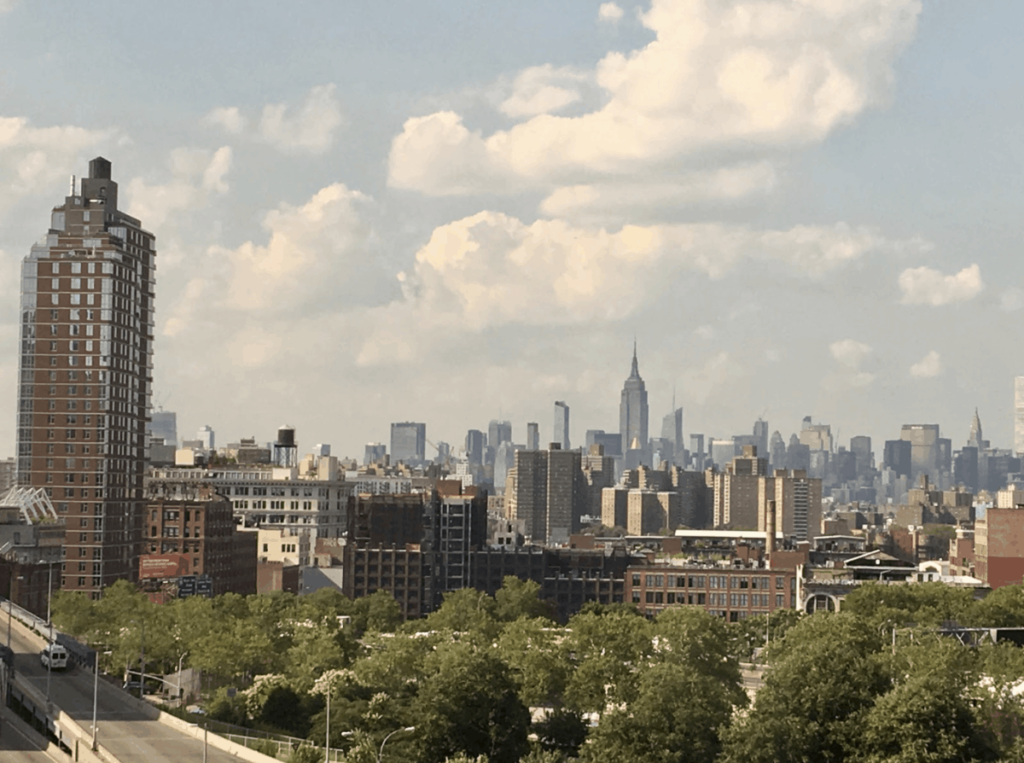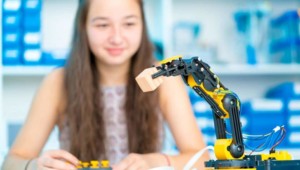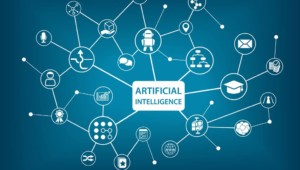How Cities are Getting Smart Using Artificial Intelligence

Spending on smart cities technology will be about $80 billion, perhaps $135 billion by 2021, according to a new report. These investments will make spread opportunity and make cities more convenient and sustainable. But they come with new complex challenges. In an interview with China Global Television, I discussed smart cities and the technology that’s driving them.
What makes a city smart?
The Smart Cities Council promotes three core values:
- Livability: Cities that provide clean, healthy living conditions without pollution and congestion. With a digital infrastructure that makes city services instantly and conveniently available anytime, anywhere.
- Workability: Cities that provide the enabling infrastructure — energy, connectivity, computing, essential services — to compete globally for high-quality jobs.
- Sustainability: Cities that provide services without stealing from future generations.
To their list, we add Learnability, the equitable access to quality learning opportunities across a coordinated ecosystem from birth through careers.
What’s driving the growth of smart cities?
On the demand side, people are moving to cities to look for jobs and a better quality of life. More than half of the world’s population now lives in urban areas and it’s projected to rise to two thirds by the middle of the century. Rapid urbanization led to big problems like pollution, traffic and crime. These all create demand for smart cities solutions.
On the supply side, access to cheap devices and broadband has connected more than half of the world’s population. Add sensors and cameras and we have billions of devices sharing data–the so-called internet of things.
Connected communities and cheap storage paved the way for the platform revolution–we work, learn, and play on platforms that get better as they get bigger (network effect).
Big data and cheap computing also enabled the explosion of artificial intelligence (AI), code that learns, in software applications supporting every aspect of life. Add enabling tools like robotics, drones, and autonomous vehicles (as shown below), and you have a world of shaping tools.

“AI is the most important issue shaping society,” said veteran venture investor Ted Dintersmith.
AI applications are now prevalent in healthcare (diagnosing disease and improving public health), transportation (traffic control), public safety (facial recognition), manufacturing (process control) and in online retail.
Will rising investments pay off?
Investing in and coordinating education opportunities is the right place for smart cities to start. Regions that skill up for the innovation economy will win.
Investments in sustainability and pollution reducing policies have already paid off for Chinese cities.
On infrastructure bets, focus and partnerships are key to a return on investment. Based on local assets, regions should pick a few areas of focus such as healthcare, logistics, or advanced manufacturing.
Who is making progress?
A recent AT Kearney 2018 Global Cities Report measured business activity, human capital, information exchange, cultural experience and political engagement. While the top of the list is dominated by cities you’d expect– New York, San Francisco, London, Paris, Singapore–six cities in China were added to the list. Their progress was a result of “initiatives that have focused on business, governmental, and cultural activities, providing improvements that boost the quality of life for residents, increase the ease of doing business, and attract more investment and attention from global companies.”
What about privacy concerns? What are the other challenges?
We see 10 big tough issues heading toward cities fast:
- Unemployment. We may be near “full employment now” but it doesn’t feel that way. “Workers who have steadily lost access to the economy as digital processes replace them have a sense of things falling apart, and a quiet anger about immigration, inequality, and arrogant elites,” said Brian Arthur, an external professor at the Santa Fe Institute. Things get worse from here. Automation will shrink the middle of the jobs market. New jobs will be created but that is even harder to predict than displacement which will vary by sector and geography.
- Income inequality. If you think people are ticked about income inequality last year, just wait. The folks that develop, finance, and own the robots are winning in the automation economy. Income inequality will accelerate and, combined with job dislocation, require broader income protection.
- Privacy. There will be 50 billion devices connected by 2020 including a billion cameras–all feeding data to artificial intelligence platforms. Perhaps you’ve noticed the marked improvement in facial recognition on Facebook this year. Police in Shenzhen are already ticketing jaywalkers using facial recognition. We are approaching radical transparency where every search, every move, every test informs a merchant, authority, or insurer. Want to preserve any privacy? That will take some new policies.
- Algorithmic bias. AI gets smarter the more data you feed it. But it quickly learns our biases and those embedded in our society. For example, cameras missed the mark on racial sensitivity and software used to predict future criminals showed bias against black people. Increasingly, AI determines who gets a loan, who is insured, and who gets hired. Bias prevention will require creativity and diligence.
- Access. The most powerful tools the world has ever known have been created–and they are getting smarter every day. But who will have access to AI tools? Google open sources TensorFlow and last month Microsoft open sourced some tools but both require technical sophistication to use. OpenAI is a non-profit AI research company created by Elon Musk, Sam Altman and others to develop open source AI beneficial to humanity. All good news, but access to tools and the chops to use them will be an endless challenge.
- Machine ethics. John Giannandrea AI chief at Google is concerned that bias is being built-in to many of the machine-learning algorithms by which the robot makes decisions, “The real safety question, if you want to call it that, is that if we give these systems biased data, they will be biased.” Take autonomous vehicle (AV) policies as an example. AVs are on the road today and municipalities are scrambling to figure out if and how to regulate them. They surface moral dilemmas (e.g., kill the driver or the pedestrians?) and allow debate, but do we want 10,000 municipalities trying to figure this out on their own and building a patchwork of unique laws?
- Weaponization. Former President Obama kicked drone strikes into high gear–an opening salvo in modern mechanized warfare. Autonomous killer robots aren’t far behind the drones–and a global AI-powered arms race is inevitable. While the US walks away from global trade and climate treaties, do you see a new Geneva Convention for robo-war?
- Humanity. How do machines affect our behavior and interaction? AI bots are becoming better and better at modeling human conversation and relationships. This paired with better calibration and gamification are making video and mobile games more addictive. Will tech addiction be next addiction wave after opioids? If not an addiction crisis, will AI simply build alienation and resentment, will it threaten human dignity? The answers will be a mixture of practice and policy.
- Genome editing. Machines are learning to recognize tumors and edit genomes. This is good news if you think cancer sucks but it raises a bunch of tough questions about who can edit genes for what purpose. And which of the soon to be 8 billion people on earth will have access to precision medicine?
- Bad AI. Elon Musk thinks AI is more worrisome than North Korea. His startup Neuralink is building a brain interface so that we’re smart enough to keep up with super AI–what Nick Bostrom thinks may be the last invention humans ever need to make.
This is a few years out, but tech progress will continue to accelerate resulting in very powerful computers, advanced weaponry, space travel, human longevity (for some), realistic VR, and fine-tuned emotional and motivational controls. There are a bunch of ways this could go badly, very badly. Musk wants us to start considering limitations. Zuckerberg thinks he’s an alarmist. It’s worth having the conversation.
Smart cities are beginning to host community conversations about these issues and developing agreements that promote access and equity.
For more on the new economy, see:
- Building the Cognitive Muscles to Thrive in the Automation Age
- Ask About AI: The Future of Learning and Work, a new report from Getting Smart
- Shaping the 4th Industrial Revolution, podcasts and book from World Economic Forum
This post was originally published on Forbes.
Stay in-the-know with all things EdTech and innovations in learning by signing up to receive the weekly Smart Update.





Andrew Mark
If you are looking to study Artificial Intelligence, then you can get admission in one of the leading university in Pakistan.